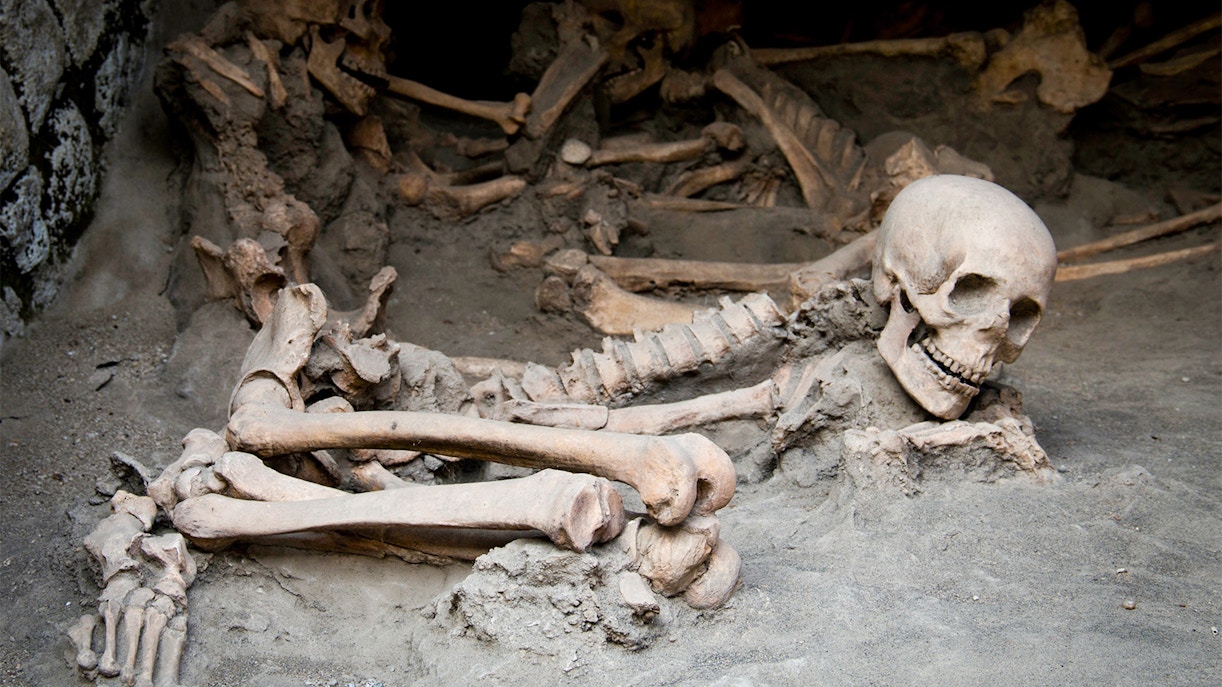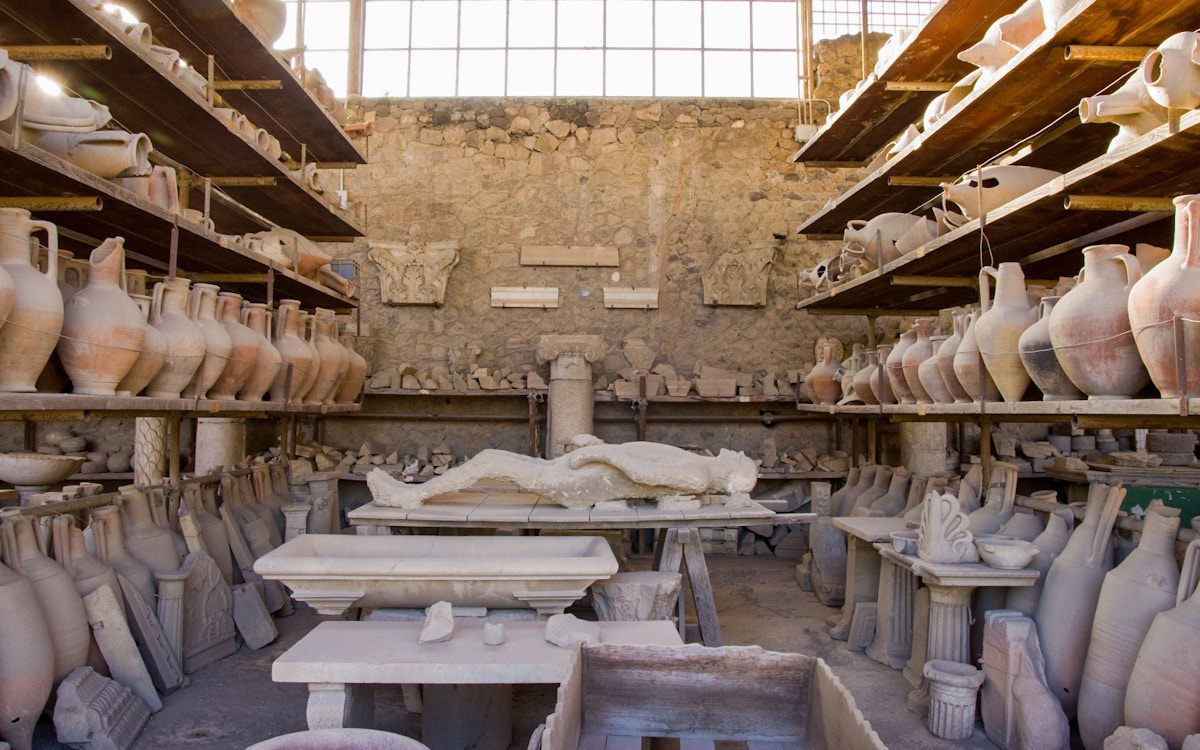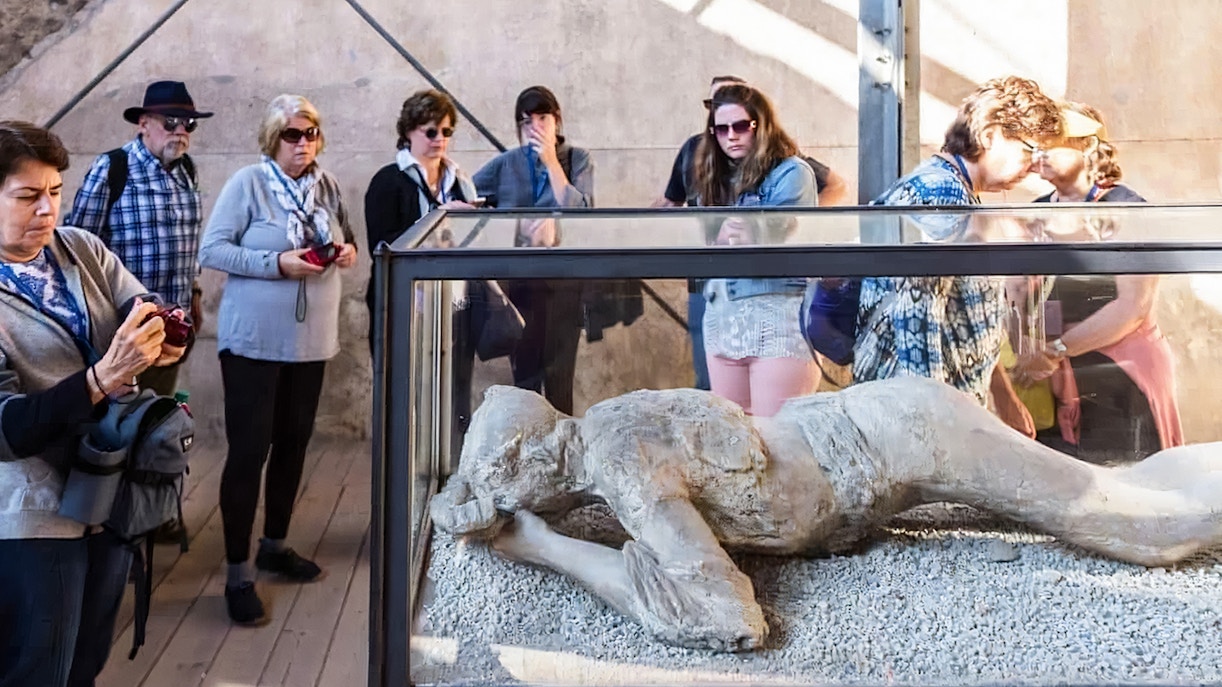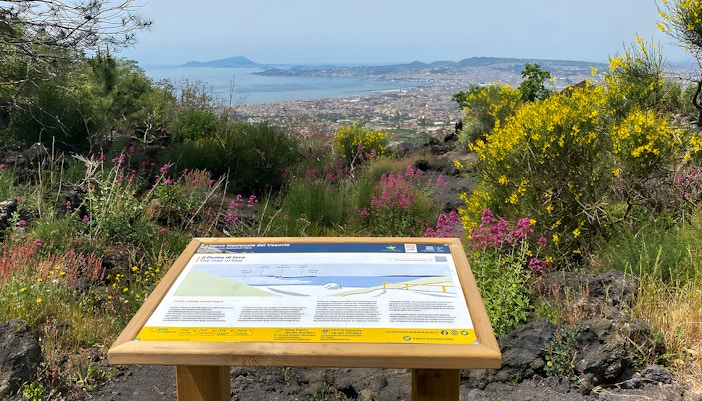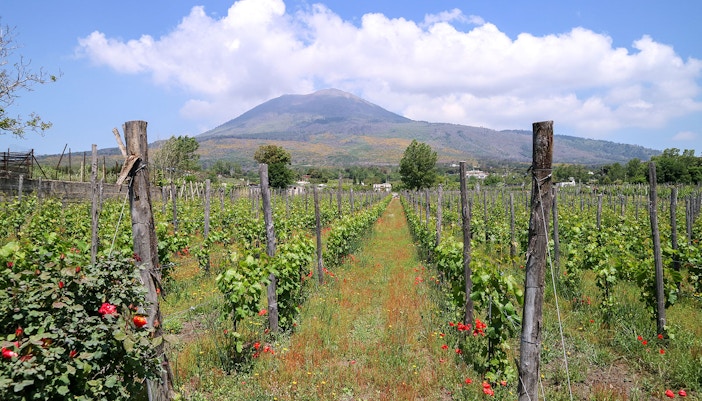Picture ancient Pompeii and Herculaneum on a typical day, with people going about their lives, unaware of the impending doom. Beneath the surface, Mount Vesuvius, dormant yet ominous, held a destructive force. In 79 C.E., this force was unleashed, as Vesuvius erupted with devastating fury. The eruption buried the cities under a blanket of ash and pumice, preserving the final moments of its inhabitants in haunting detail. Centuries later, in the 1800s, Giuseppe Fiorelli, the Italian archaeologist, developed a technique to capture these moments by creating casts of the voids left by the decayed bodies. These casts and skeletons now stand in Pompeii and Herculaneum, solemn reminders of a tragic day, offering a poignant glimpse into the past.

